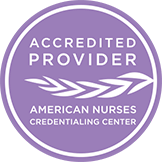Mary and Joe Martin, a middle-class couple from rural Kansas, had long desired to adopt a child. After years of paperwork and waiting, they were overjoyed to welcome a newborn baby girl, whom they named Jacklynn, into their home. The adoption process went smoothly, and they embraced the challenges and joys of parenthood. However, their world was shaken when they received a call from the adoption agency six weeks later. Jacklynn's biological mother had recently tested positive for HIV, raising immediate concerns about Jacklynn's health. The adoption agency explained that the biological mother did not disclose her HIV risk due to social stigma and fear that she would no longer have access to the medical care she desperately needed.
The Impact of Social Stigma
As the Martins sought guidance from family, friends, and their community, they quickly encountered the stigma surrounding HIV. Their closest friends, Bill and Karen Minor, distanced themselves, while family members expressed concerns about Jacklynn's future and whether she could safely interact with other children. When Mary Martin disclosed her daughter's potential health condition, the daycare provider decided she could no longer provide services for them. This social stigma added emotional strain, leaving them feeling isolated when they needed support the most.
Medical Evaluation and Treatment Options
Upon learning of Jacklynn's potential exposure to HIV, the Martins immediately consulted a pediatric infectious disease specialist in Kansas City. The medical team performed a series of tests, including a complete blood count (CBC) with nucleic acid tests (e.g., DNA and RNA polymerase chain reaction (PCR) assays), to determine whether Jacklynn had contracted the virus.
Fortunately, early testing showed that Jacklynn was not HIV-positive. However, due to the risk of perinatal transmission, the doctors recommended a preventive treatment regimen. She was prescribed a six-week course of Zidovudine (AZT) to reduce the likelihood of developing HIV. The Martins remained vigilant with regular follow-ups, ensuring she continued to test negative over time.
Healthcare Barriers
The family faced significant healthcare barriers, both systemic and personal. Initially, finding a pediatric specialist familiar with HIV-exposed infants proved challenging, as many local pediatricians lacked experience in this area. Additionally, navigating insurance coverage for the necessary medications and frequent medical tests was overwhelming. Some insurers require extensive documentation to justify coverage for preventive HIV treatment, delaying essential care.
Beyond insurance, the stigma within the healthcare system itself was evident. Some medical staff made insensitive comments, assuming Jacklynn was infected before confirming the test results. Mary Martin also felt the sting of stigma as some providers assumed she was the biological mother who had HIV and exposed her infant daughter. To some degree, Mary Martin also struggled with anger towards the biological mother for putting Jacklynn in this position. After some self-reflection, she understood that this was her own bias towards the biological mother. The Martins had to advocate fiercely for their daughter's right to unbiased, high-quality medical care.
Financial Struggles
Jacklynn's health concerns placed a significant financial strain on the family. The cost of frequent hospital visits, specialized blood tests, and antiviral medications quickly accumulated. Even with health insurance, the out-of-pocket expenses were substantial. Additionally, the Martins had to take time off work for medical appointments, travel to Kansas City, and often stay overnight in hotels for early appointments, leading to lost income.
The social stigma also affected their financial situation indirectly. The daycare provider quit, meaning that either Mary or Joe had to miss work or reduce their working hours, impacting the family's financial stability. The stress of mounting bills and uncertainty about Jacklynn's future made the experience even more difficult.
Overcoming Challenges and Finding Support
Despite these challenges, the Martins found solace in support groups for families affected by HIV, connecting with others who understood their struggles. They also worked with advocacy organizations to spread awareness about perinatal HIV transmission and to combat misinformation. Over time, they built a new support system composed of compassionate healthcare professionals and like-minded parents who embraced Jacklynn without fear or prejudice.
The Martins family's experience highlights the multifaceted challenges that adoptive parents may face when dealing with an HIV-related diagnosis. From battling social stigma to navigating complex healthcare systems and financial burdens, they demonstrated resilience and unwavering commitment to their daughter's well-being. The importance of education, advocacy, and community support are crucial in reducing HIV-related stigma and ensuring every child has access to the care and love they deserve.








